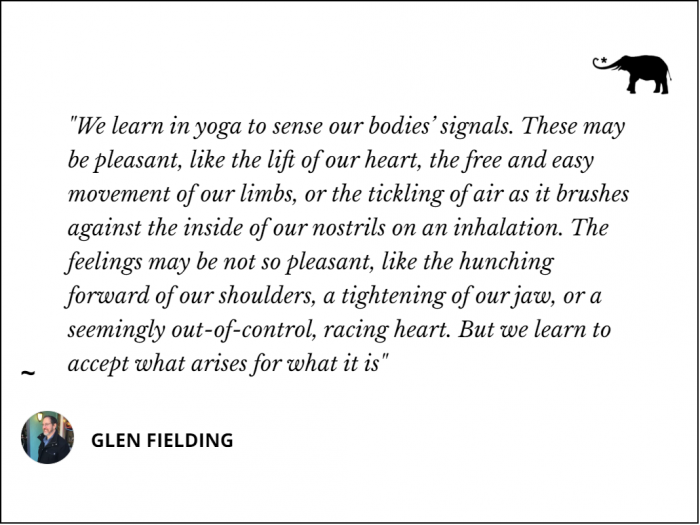In her fascinating new book, The Extended Mind: The Power of Thinking Outside the Brain, the eminent science writer Annie Murphy Paul tells the story of John Coates.
Mr. Coates was a financial trader who had worked in major international investment houses. He had a PhD in economics from Cambridge and highly refined analytic skills. Yet, he couldn’t help noticing that many of his colleagues with less distinguished academic and technical backgrounds were better at making money. Their investment intuition often seemed to yield higher returns than his more formal, highly rational approach.
It turned out that one of the clearest personal qualities that set the high moneymakers apart from the less successful investors was their ability to detect the timing of their own heartbeats. Investors who could sense their pulse without having to manually find it with their fingers on an artery were, surprisingly, better able to understand and make predictions in the financial market.
This heartbeat-related research was part of a broader line of inquiry into what researchers call “embodied cognition,” the idea that we think with and through our bodies.
In this view, the mind is not some sort of insulated computer, locked within our brains and separate from our bodies. The mind is “extended” in the sense that it draws on signals from our muscles, organs, nervous system, and even our bones, along with feedback from the external environment and our concepts and memories, to shape our judgments.
Often, our bodies lead the way, telling our minds what to think.
In the case of the financial advisors who could sense their own heartbeat, what they were demonstrating was a high level of “interoception.” This is the ability to follow the sensations of the body. Rather than depending heavily on abstract economic models, traders high in interoception were open to their body-centered intuition. They were attuned to the wisdom their bodies had to offer.
So, it doesn’t seem outlandish to conclude that if we want to make more money, we should follow closely our “somatic rudders,” the signals and directions we receive from our physical selves.
Certainly, there is a big place in our work and personal lives for logical planning, analysis, evaluation, and deliberation. But for so many of us, learning to let our bodies help guide the path may yield bigger dividends than trying to squeeze more logic and analysis out of our problem-solving minds.
Where does yoga fit into this?
The yoga of postures and movement, the form of yoga I’m referring to in this article, is all about embodied cognition and interoception. Yoga lets our bodies extend the reach of our minds. As we practice the postures, we bring our openness, curiosity, attention, and focus to the signals our body is sending. We are in this respect more than “mindful.” We are, more accurately, mind-full of our bodies, a kind of body-enriched mindfulness.
To circle back to the heartbeat detection issue, it’s noteworthy to me that before beginning yoga, I never sensed my heartbeat without placing my fingers on my wrist. It was in yoga class that I learned to listen to my pulse and detect its steady beat without manual effort.
Since yoga is never about just one sensation, I also learned to feel not only the steadiness of my pulse but the rhythmic flow of my breath. When, for example, my exhalations grew appreciably longer than my inhalations during restorative yoga poses (like “legs up the wall,” a pose lovingly described by Juliana Otis in a recent Elephant Journal article, as “The Most Underrated yoga Pose we all Need”), I could hear my heart rate slow down.
We learn in yoga to sense our bodies’ signals. These may be pleasant, like the lift of our heart, the free and easy movement of our limbs, or the tickling of air as it brushes against the inside of our nostrils on an inhalation. The feelings may be not so pleasant, like the hunching forward of our shoulders, a tightening of our jaw, or a seemingly out-of-control, racing heart. But we learn to accept what arises for what it is, avoiding the tendency to latch onto pleasant feelings as if they might last forever, or push away unpleasant feelings as if we can’t possibly bear them another second. We learn to let sensations be, like waves that rise, crest, and then settle down as they wash onto the shore (unless, of course, we feel clear physical pain, then we learn simply to stop).
But we also learn what might be referred to as embodied self-adaptation. We learn to adapt to what our body is doing in response to what it is telling us. For example, if we feel a tightness in a joint, such as in one of our shoulder joints as we raise our arms overhead, we might escort our breath into the joint to soften the tension there. And we might hug in the arm closer to the joint as a stabilizing home to support the arm’s freer upward movement. The impact of such self-adaptation is not merely physical. It can shift our energy, our mood, and our feeling of agency and hopefulness.
As an aspect of embodied self-adaption, we might seek to embody the archetypes that certain poses represent.
If we want to garner our inner strength, confidence, and resolve, what’s more fitting than to assume the posture of a noble warrior, as in the Warrior poses that all yoga students are introduced to in their first year or two? When we move with intention and imagination, the movements can clear our minds of limiting beliefs. They can reshape our thoughts from the body up to the mind.
Through yoga, we learn to listen to our bodies’ messages and then generate new messages. In so doing, we can create a more open, stable, and free state of mind.
The traditional top-down path of getting our minds to tell our bodies what to do seems less wise and less effective than keeping an open channel upward from our bodies to our minds.
When we are in sync with our bodies, we can move into a more balanced state, one more receptive to creative solutions and harmonious relations with others.
If the financial advisors who could sense their heartbeats are any guide, then it’s a safe bet that integrating our bodies and minds is likely to help us not only feel good but achieve greater success in the world.
And what life pursuit is more suited to the quest for body-mind integration than the venerable practice of yoga?













Read 8 comments and reply